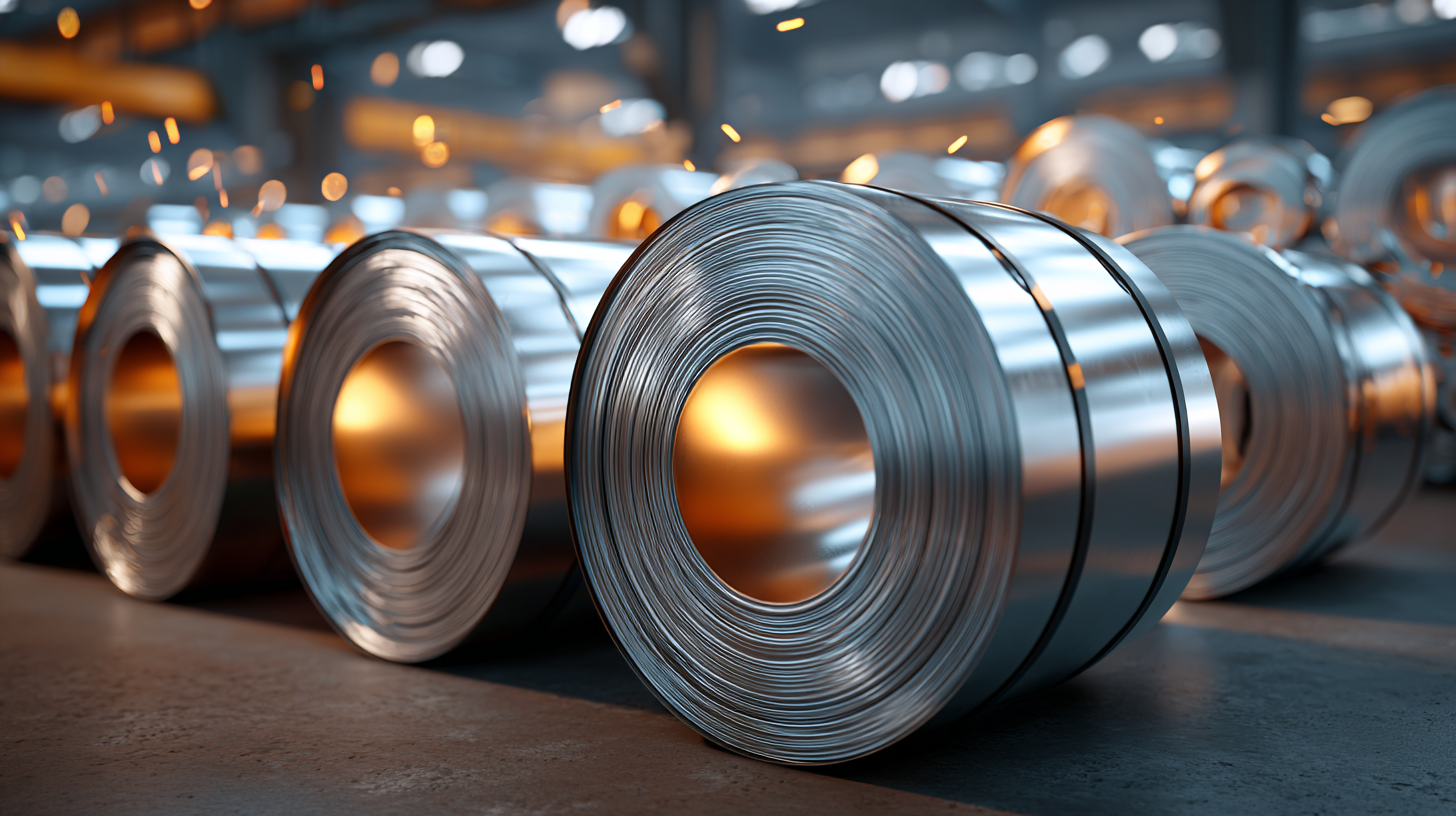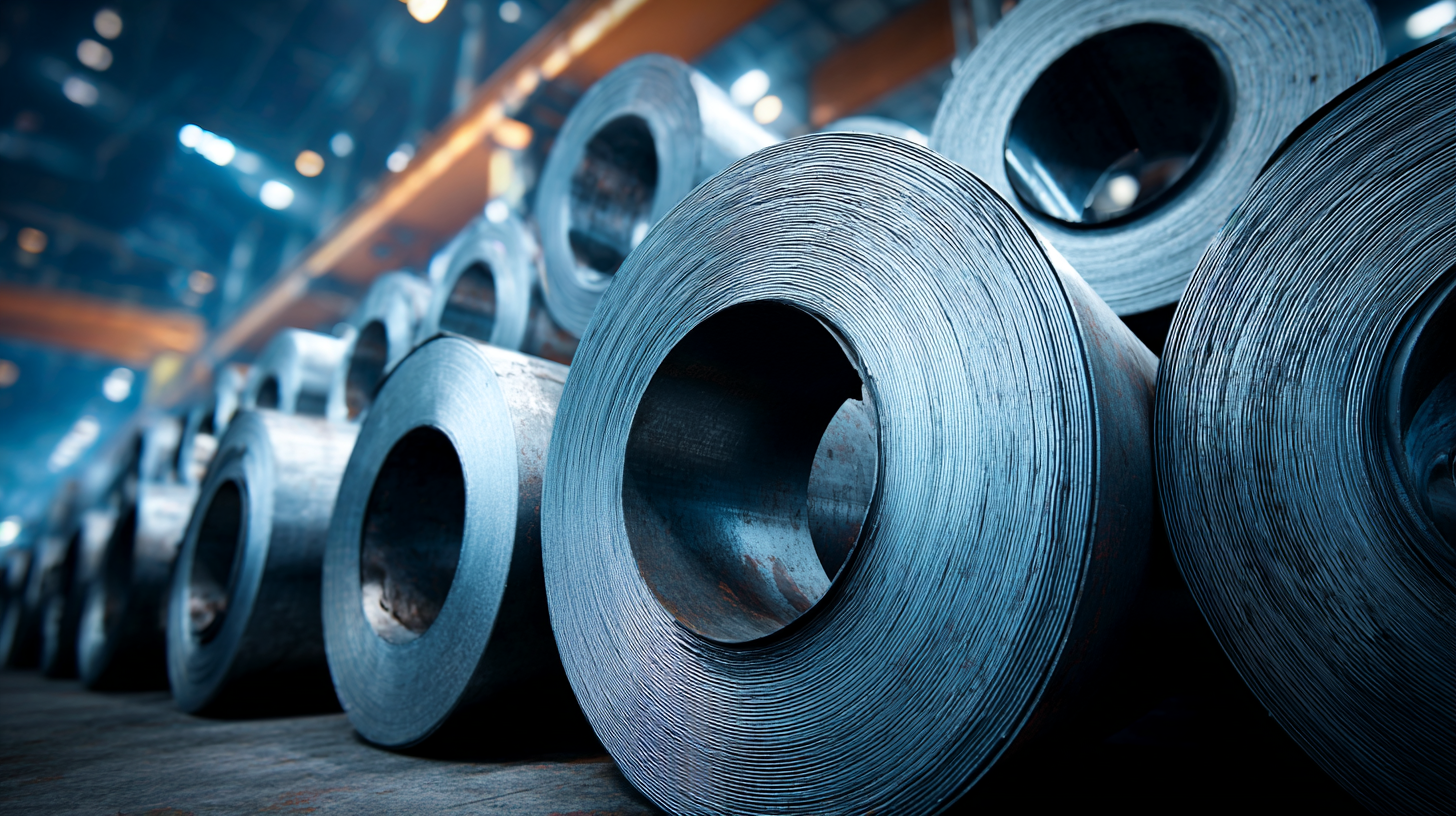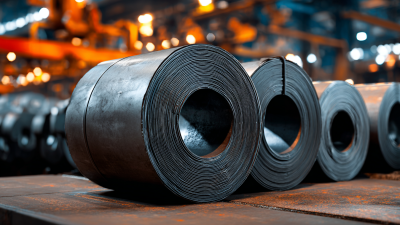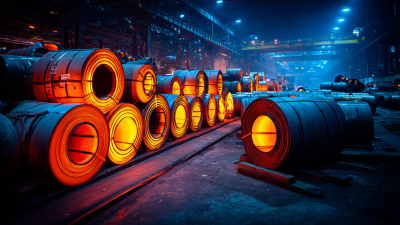
In the ever-evolving landscape of construction and manufacturing, the choice of materials plays a pivotal role in determining the success and efficiency of projects. One material that stands out for its outstanding properties and versatility is rolled steel. As industry expert Dr. Emily Carter, a leading figure in structural engineering, puts it: “Rolled steel not only enhances the durability of structures but also offers unparalleled flexibility in design and application.” This statement underlines the crucial benefits rolled steel brings to the table, making it a preferred choice among architects and builders alike.
The advantages of using rolled steel extend beyond mere strength; they encompass a wide array of factors that contribute to cost-effectiveness, sustainability, and overall performance. From reducing construction time to enhancing structural reliability, rolled steel’s innate properties enable it to meet the rigorous demands of modern construction projects. This introduction explores the top ten benefits of rolled steel, delving into how its unique characteristics influence not just manufacturing processes but also the outcomes of construction endeavors. Emphasizing the significance of this material, we aim to shed light on why rolled steel should be at the forefront of material selection in today’s competitive environment.

Rolled steel is renowned for its enhanced strength and durability, making it an ideal choice for both construction and manufacturing applications. The process of rolling steel increases its mechanical properties, resulting in a material that can withstand substantial loads and stress. This extraordinary strength is vital in structural applications where safety and reliability are paramount, such as in bridges, skyscrapers, and industrial facilities. The uniformity achieved through the rolling process ensures that the steel performs consistently, minimizing the risk of failure under extreme conditions.
Moreover, the durability of rolled steel extends its lifespan, reducing maintenance costs and enhancing the sustainability of construction projects. Its resistance to fatigue and deformation under repetitive loads allows for longer-lasting structures, which is essential in environments subject to dynamic forces. Additionally, the protective coatings that can be applied to rolled steel further enhance its resistance to corrosion, ensuring that it retains its structural integrity over time. This makes rolled steel not only a strong choice for foundational elements but also a wise investment for the longevity of any construction endeavor.
Rolled steel has become a cornerstone in the construction and manufacturing industries, primarily due to its cost-effectiveness. One of the key ways rolled steel reduces expenses is through its high strength-to-weight ratio. This characteristic allows for the use of lighter materials in structural applications, which not only minimizes the amount of steel required but also decreases transportation costs. As a result, contractors can save significantly when sourcing materials and managing logistics.
Additionally, the manufacturing processes associated with rolled steel are streamlined, leading to lower production costs. Techniques such as continuous casting and hot rolling enable the mass production of uniform steel sheets and beams, reducing labor costs and time needed for fabrication. These efficiencies translate to cost savings that can be passed on to clients, making rolled steel a financially savvy choice for builders and manufacturers alike. The overall reduction in construction expenses makes rolled steel an attractive option, ensuring projects stay within budget while maintaining structural integrity and safety.

Rolled steel has become a cornerstone material in various industries, owing to its remarkable versatility. According to a report by the World Steel Association, in 2021, the global demand for rolled steel reached over 1.8 billion tons, with significant contributions from construction and manufacturing sectors. In construction, rolled steel is employed for beams, columns, and reinforcements due to its strength-to-weight ratio, which enables architects and engineers to design safer and more efficient structures. The American Institute of Steel Construction estimates that structural steel used in buildings constitutes nearly 50% of the total steel production in the U.S.
In the manufacturing realm, rolled steel finds applications across automotive, shipbuilding, and appliance industries. Data from the International Organization of Motor Vehicle Manufacturers indicates that about 50% of the raw material used in vehicle production is steel. Moreover, rolled steel components enhance the durability and performance of vehicles, allowing manufacturers to meet stringent safety standards while optimizing fuel efficiency. Additionally, the adaptability of rolled steel allows for advancements in additive manufacturing techniques, propelling innovations in product design and functionality across a multitude of sectors. This adaptability is a key factor in the rising trend of using rolled steel to create custom solutions tailored to specific industrial needs.
This chart illustrates the versatility of rolled steel by highlighting its applications across various industries, showcasing its benefits in terms of efficiency, strength, and cost-effectiveness.
Rolled steel has become a cornerstone in construction due to its enhanced safety features, which are critical in ensuring the well-being of workers and the longevity of structures. One of the primary advantages of using rolled steel is its superior strength-to-weight ratio. This not only makes transportation easier but also ensures that buildings can withstand various environmental pressures, thus decreasing the risk of structural failures. The high tensile strength of rolled steel allows for the construction of taller and more complex buildings while effectively minimizing the risk of collapse, particularly in seismic regions.
In addition to its structural integrity, rolled steel is also resistant to severe weather conditions and hazards such as fire and corrosion. Modern rolled steel is often treated with protective coatings that enhance its durability against elements that can jeopardize safety. This resilience translates into fewer maintenance requirements over time and reduces the chances of accidents caused by structural degradation. Moreover, the predictability of rolled steel’s performance in diverse conditions allows engineers to design safer and more reliable structures, ultimately fostering a safer working environment during construction and throughout a building's lifespan.

The use of rolled steel in modern manufacturing is increasingly recognized for its eco-friendly advantages. Recent advancements in steel production technologies, such as the establishment of a state-of-the-art rolling line in Poland, contribute to more sustainable practices. This facility embodies cutting-edge processes that minimize waste and reduce emissions, underscoring the steel industry's commitment to environmental stewardship. Moreover, the expansion of production capabilities with a focus on sustainability reflects a growing trend among manufacturers to adopt greener practices.
Additionally, the integration of innovative materials and processes, such as in the development of cold rolling technologies, highlights the importance of improving efficiency in steel manufacturing. This not only enhances product quality but also significantly lowers the carbon footprint associated with traditional steel production methods. Embracing these sustainable approaches positions rolled steel as a pivotal material in the quest for eco-friendly construction and manufacturing solutions, aligning industry practices with global sustainability goals.
| Benefit | Description | Eco-Friendly Aspect |
|---|---|---|
| Durability | Rolled steel exhibits exceptional strength and longevity. | Reduced need for frequent replacements decreases waste. |
| Versatility | Can be used in various applications from buildings to machinery. | Supports diverse eco-friendly designs and innovations. |
| Cost-Effective | Lower material costs and reduced maintenance expenses. | Less resource consumption over time contributes to sustainability. |
| Recyclability | Steel can be recycled multiple times without losing quality. | Promotes circular economy and reduces landfill waste. |
| Safety | High strength ensures structural integrity and safety. | Long-lasting materials lead to safer buildings with fewer resources. |
| Energy Efficiency | Helps in constructing energy-efficient designs. | Reduces overall carbon footprint of the buildings. |
| Easier to Work With | Can be easily fabricated and shaped for various uses. | Less energy is consumed in processing compared to other materials. |
| Aesthetic Appeal | Available in various finishes that enhance visual appeal. | Encourages the use of beautiful, sustainable materials. |
| Fire Resistance | Rolled steel is inherently fire-resistant. | Enhanced fire safety reduces environmental damage from fires. |
| Low Maintenance | Requires minimal upkeep compared to other materials. | Less maintenance reduces resource consumption and waste generation. |





